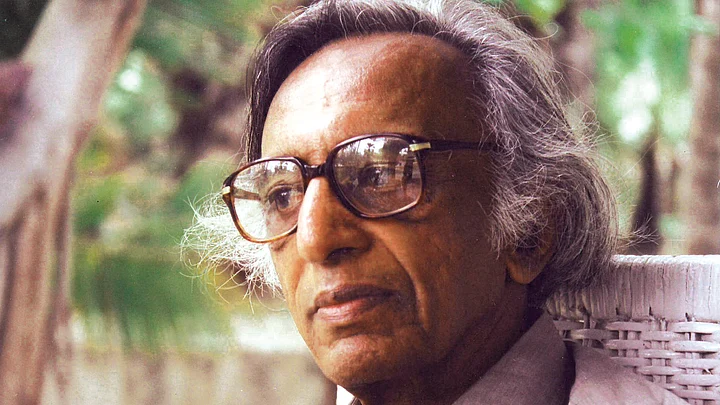(This article was first published on 7 July 2015, and has been reposted from The Quint’s archives on the birth anniversary of Tyeb Mehta.)
As a young journalist at Reuters in 2002, I remember the front page making prominent mention of an artist named Tyeb Mehta. His name was at the time new to the masses – they had heard of no one else but MF Husain. I was vaguely aware that Tyeb was part of the significant Progressive Artists Group of India, set up in 1947. But that was about it.
The brilliance of this low key artist was finally recognised by the auction market. Eventually though, we all woke up to this gem amongst us. Celebration, a large canvas triptych, became the first most expensive piece of Indian art to be auctioned at Christie’s in 2002 for $300,000.
That single event became the turning point for Indian art.
There was a brief lull till another Tyeb painting ensured the Indian art market broke into the million-dollar club – effectively putting India on the global art map. The work, titled Mahishasura – a reinterpretation of the tale of the demon by the same name – happened to be the first Indian painting to cross the million-dollar mark, selling for a whopping $1.584 million at Christie’s in 2005.
That was the clincher. Tyeb’s auction records since have been unconstrained. Pull out any list of India’s top selling art works and you will find Tyeb’s name prominently dominating. In fact, each time a new Tyeb piece was introduced to the market, it broke its previous record to create a new one.
Tyeb’s Tryst With Violence
But unlike the better known Husain, Tyeb was shy – silently working in his Mumbai studio and barely producing six to seven large works in a year. No surprises then that he created just about 200 paintings in his entire career.
As demand for his art kept catapulting, however, his style and pace of work never changed. True to his innate sense of self, he continued to spend months on one work, living with it, analysing it, criticising it and finally deciding whether to complete or destroy it totally.
This habit of his shocked many of his own friends in the art world. So harsh was he on himself that if a painting he created didn’t match his standards, he would destroy the entire canvas.
Today, ten years after his death, I can remember the moment I first met him. He was frail and sweet. I couldn’t imagine how someone that soft-spoken and gentle could create works pulsating with such forceful, violent energy. Mehta would show violence quite frequently in his work – but it was not because he was fascinated by it.
On the contrary, violence had haunted him since childhood – he was constantly reminded of the man he had seen being beaten to death below his home during the Partition riots in India. The sight of a trussed bull being dragged inside a slaughterhouse in Mumbai once moved him to tears.
Tyeb’s strategy was simple – he aspired to make peace with violence. His paintings were mostly about falling figures, Kolkata’s manual rickshaw-pullers and the trussed bull. He liked keeping his works minimal. There were often large blocks of plain colour, revealing little texture.
Little-known Anecdotes of a Fascinating Life
WhenI met Tyeb in 2005, it was at an evening celebrating the success of ‘Mahishasura’. It coincided with the launch of a book on his entire career. As I recall, his friends SH Raza and MF Husain were also present that night – making it a phenomenal occasion, probably the last time the three stalwarts were seen together. (Raza would spend most of his time in Paris and Husain had soon left for Dubai.)
One could tell that Tyeb wasn’t comfortable with all the attention. He liked ‘Mahishasura’ but couldn’t understand what all the fuss was about. He asked me if ‘Mahishasura’ was my favourite Tyeb work. I emphatically said NO – my favourite was the awe inspiring triptych ‘Celebration’, I told him. He was elated to hear my reply.
Hewas conscious each time he spoke to my camera. His voice was affected by thethroat operations he’d undergone but the language of his brush continued to produceworks that haven’t quenched the blue chip art market’s hunger even today. Justlast year in December 2014, an untitled work of his auctioned for $2.8 millionat Christie’s – ensuring Mehta remains one of the most expensive artists fromIndia.
(Sahar Zaman is an independent newscaster, arts journalist and curator. She has founded Asia’s first web channel on the arts, Hunar TV.)
(At The Quint, we question everything. Play an active role in shaping our journalism by becoming a member today.)
